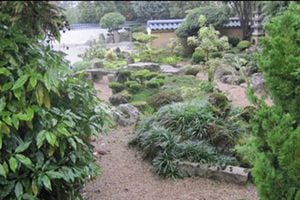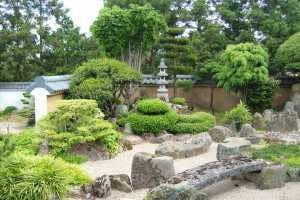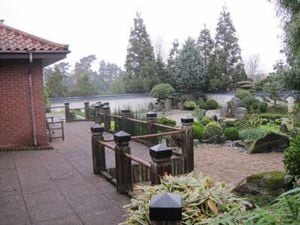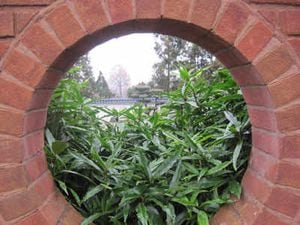Tettenhall's secret Japanese garden
One of Tettenhall's best kept secrets is its wonderful award-winning Japanese Garden.

Yet, it's not really a secret at all, as the garden is open to everyone most days of the year. Rather it's 'hidden' in plain sight in the serene grounds of Danescourt Cemetery.

The entrance is wholly understated and can be found through the double doors of the first building you come to as you enter the cemetery gates, but as you walk inside you will enter another world.
In fact this particular Japanese garden was created in 1996 by a local man, Peter Bridges, and was included with the new administration block as an area of quiet contemplation. Japanese Garden Society members discovered it in 2009 in an overgrown state, and negotiated with the council to conduct a programme of restoration and ongoing maintenance.
The original conception of a Japanese garden was to create an idyllic environment that would 'tempt the deities down from heaven' to dwell in proximity to human beings.
Outside Japan itself, Japanese-style gardens have been created across the world, and there are many around the UK, including those at Birmingham Botanical Gardens, Warwick University (which must be visited by appointment) and our own little garden at Danescourt Cemetery.
Further afield there are many others such as Newstead Abbey in Nottinghamshire and at Norwich Cathedral. A full list of UK Japanese gardens can be found at www.jgs.org.uk/what-we-do/garden-visits.
Tettenhall's special garden is now maintained by the Japanese Garden Society – on behalf of Wolverhampton City Council – and it is a little gem of calm and simplicity, well worth paying a visit to on any day of the year that Danescourt is open.
The left hand side is a traditional Zen garden, and the large gravel area is aimed at representing the 'sea of nothingness' according to the information inside the entrance building. That may sound pretentious but it is a really lovely, peaceful area, worthy of its quiet cemetery surroundings.

The lower patio area is based on a tatami mat – the traditional mat within a Japanese tea house.
On the right hand side there is a stark contrast and it is intended to be viewed from the building so that its wall relates directly to the entrance building in terms of colour – its warmth enhancing the desired character of the entire garden.
The theme relates directly to the tea garden – its lanterns lighting the way (and the stepping stones showing the way) to the Tea House itself, with its water bowl to cleanse one's self before entering the Tea House, and the black stones which are wetted as a greeting to guests.
In the middle of the right garden there is a stone waterfall which drops into the 'river of life' running into the garden from right to left as a pond in front of the upper patio area.
Planting in this part of the garden is more succulent, dominated by stunning trees and shrubs which are beautifully maintained.
The general concept is to promote the entire garden as a source of contemplation, as an area to remember loved ones, rather than recreation.

And at that level it certainly works.
In the garden the stones and rocks represent islands and mountains, the sand and gravel represent water, the shrubs and trees are forests and woods, and any vegetation that is dome clipped represents rocks.
Think in those terms when you make your first visit, and you will begin to understand what a Japanese Garden is really all about, without ever having to visit Japan itself.
And to have one on our very doorstep is a rather special and unique gift.
Use it well, grasshopper.
Tettenhall's amazing Japanese garden is open Monday to Friday from 8am to 4pm, and Saturday, Sunday and Bank Holidays from 8am to 4pm between November and February, between 8am and 5pm March and Oct, and between 8am and 7pm from April to September.
You can see the original version of this post at Tettenhall.co.uk.





